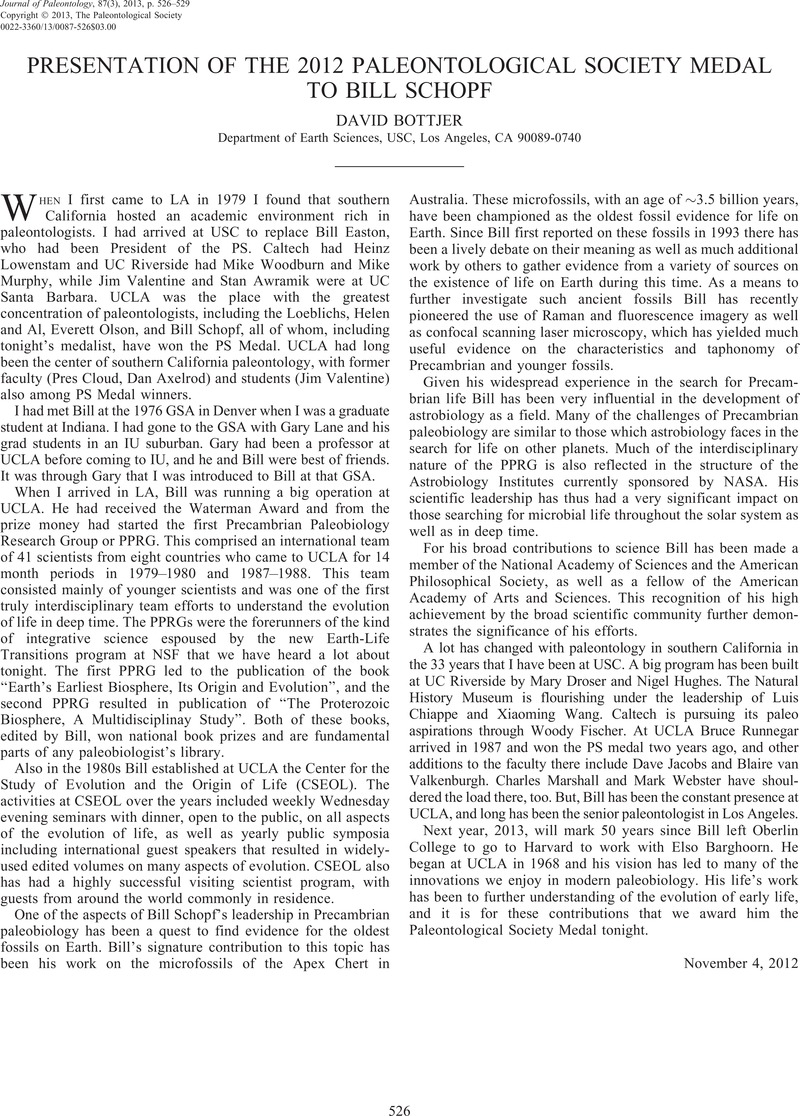Crossref Citations
This article has been cited by the following publications. This list is generated based on data provided by Crossref.
Bottjer, David
2013.
Presentation of the 2012 Paleontological Society Medal to Bill Schopf.
Journal of Paleontology,
Vol. 87,
Issue. 3,
p.
526.



